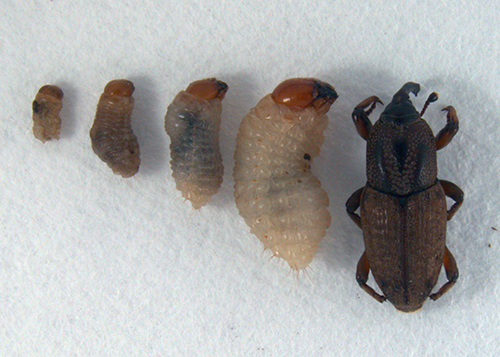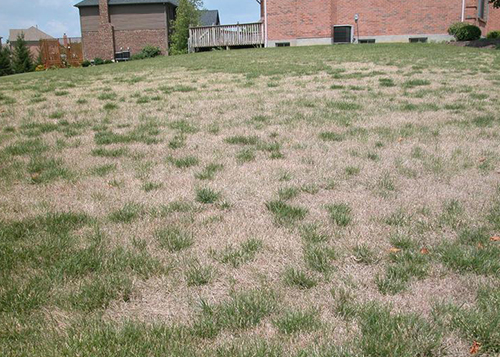Integrated Pest Management
Billbugs
Sphenophorus spp.
Pest Description
- bluegrass billbug, hunting billbug, Rocky Mountain billbug and Phoenix billbug
- adults: vary in size from the bluegrass billbug (3/16 – 1/4 inch) to the Rocky Mountain billbug (3/8 – 1/2 inch); brown, reddish brown, or black with a prominent snout
- larvae: legless and cream colored with a brown head
Host Plants, Diet & Damage
- primarily cool season turf (Kentucky bluegrass, ryegrass, fescues, bentgrass)
- can affect warm-season turf (zoysiagrass, St. Augustinegrass)
- patchy brown turf which converges to larger patches
Biology, Life Cycle & Damaging Life Stage
- overwinter as adults with some species also overwintering as late-stage larvae
- adults are active from spring through summer, depositing eggs into turf stems
- larval feeding occurs late spring into summer
- initial larval feeding occurs within the stem; later stages occur in the soil in the root zone
- pupate in soil and emerge as ground-dwelling adults
- typically one generation per year
- larvae are the damaging stage; adults have been shown to cause damage to turf in other regions of the U.S.
IPM Recommendations
- Monitor adult activity with pitfall traps and larval presence by tugging on grass blades.
- Avoid drought-stressing turf, which favors billbug activity.
- Select resistant and endophyte-enhanced turf varieties.
- Apply a preventive insecticide (anthranilic diamide; neonicotinoid) to suppress populations in early spring.
For more information, see our Billbugs fact sheet.




